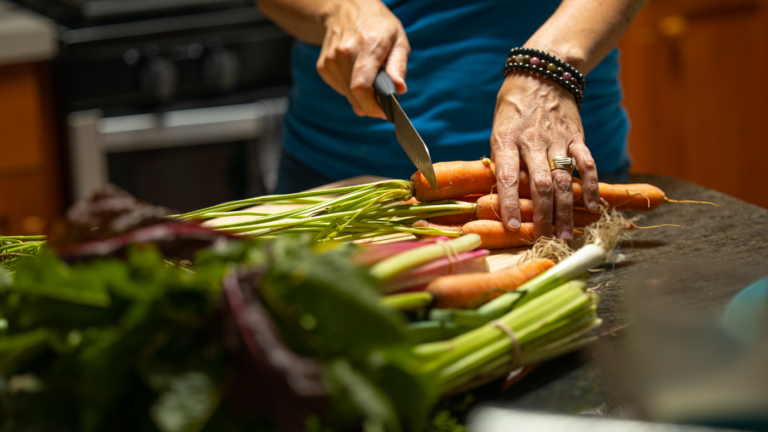PLEASANTVILLE, IA — When the pandemic first hit, Maureen Schletzbaum had to figure out how to sell her produce while avoiding human contact. Normally, she’d set up a booth at two different farmers markets near Pleasantville, Iowa, where she and her daughter operate Straw Hat Farms.
But as COVID-19 continued to spread, Schletzbaum opted to go online. She listed the products she had available — peppers, potatoes, flowers — on her website. And orders flooded in.

“It was no-contact for people to order and to pay for it,” she said. “And then we would just drop it off at their door.”
Schletzbaum was one of many local food producers who turned to e-commerce during the pandemic. And she, like many others, has no plans to stop.
It’s part of a larger trend, for both producers and consumers, toward online shopping. The pandemic acted as a catalyst, pushing farmers and producers online out of sheer necessity. It also provided a big opportunity for online platforms, including Market Wagon, which allows farmers to sell directly to consumers.
Founder and CEO Nick Carter Carter said while Market Wagon has existed for about a decade, it’s scaled up dramatically over the past two years, especially in the Midwest. But he said the transition to buying and selling food online was inevitable.
“Everybody was going to adopt e-commerce grocery at some point, it just was going to take time,” he said. “Consumer habits change slowly. COVID just forced that.”
And for many farmers, selling food online is easier than schlepping it to a farmers market.
“You don’t know how much produce you need to take and you have to load everything the night before and get there and set up and all that,” Schletzbaum said. “So this is a great advantage.”
But e-commerce is more of a tool in a farmer’s toolkit, versus a replacement for the traditional farmers market, says Margaret Milligan, program coordinator for Buy Fresh, Buy Local Nebraska. The organization represents a few different farmers markets across Nebraska, none of which have seen a drop in vendors since e-commerce began picking up steam.
While e-commerce is easier in some ways, she said, “online sales might also require more time finding and marketing to customers. There are also packaging, shipping, and transporting to consider when selling online.”
The more avenues for direct-to-consumer sales, the better, Milligan said. After all, pandemic-driven supply chain disruptions have sparked renewed interest in local food in general over the past couple years.
“I think people just wanted to be more connected with who’s growing their food,” she said.
While Schletzbaum, the Iowa farmer, plans to continue selling online, she’s still attending one of her local farmers markets.
“We’re a small community of just about 500 people, and so we want to support the community by attending that market,” she said.
Online sales may attract a new group of customers, according to Carter, Market Wagon’s CEO. He said their data show the platform is reaching people who do not frequent farmers markets.
“Rather than thinking of it as farmers are dropping out of the farmers market or burning out, what they’re doing is they’re actually scaling up beyond it,” he said.
Follow Dana on Twitter @DanaHCronin
Harvest Public Media reports on food systems, agriculture and rural issues through a collaborative network of NPR stations throughout the Midwest and Plains.
9(MDM5MjE5NTg1MDE1Mjk1MTM5NjlkMzI1ZQ000))

